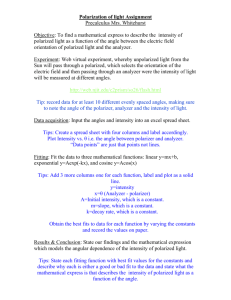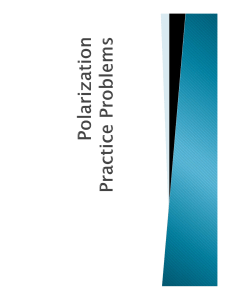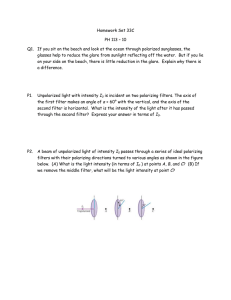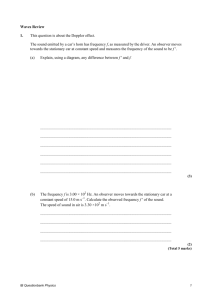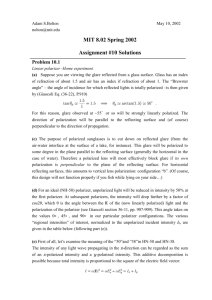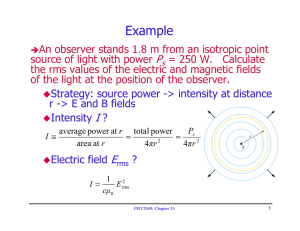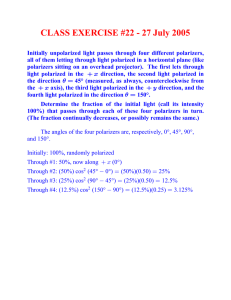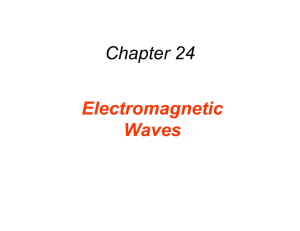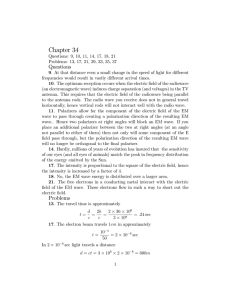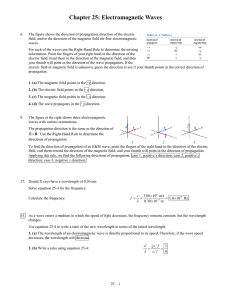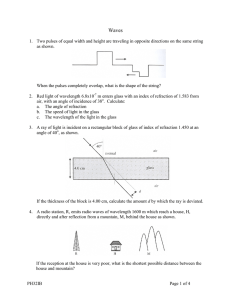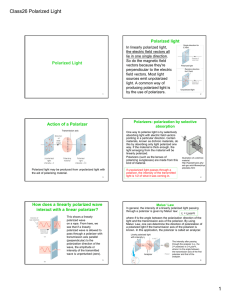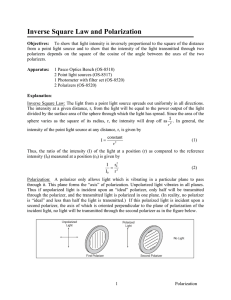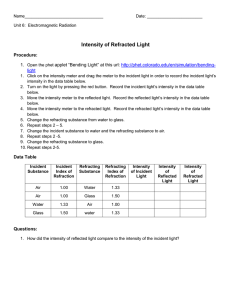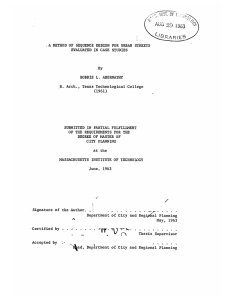Physics 2049 Spring 2005 Quiz 8 Name: Period:
advertisement
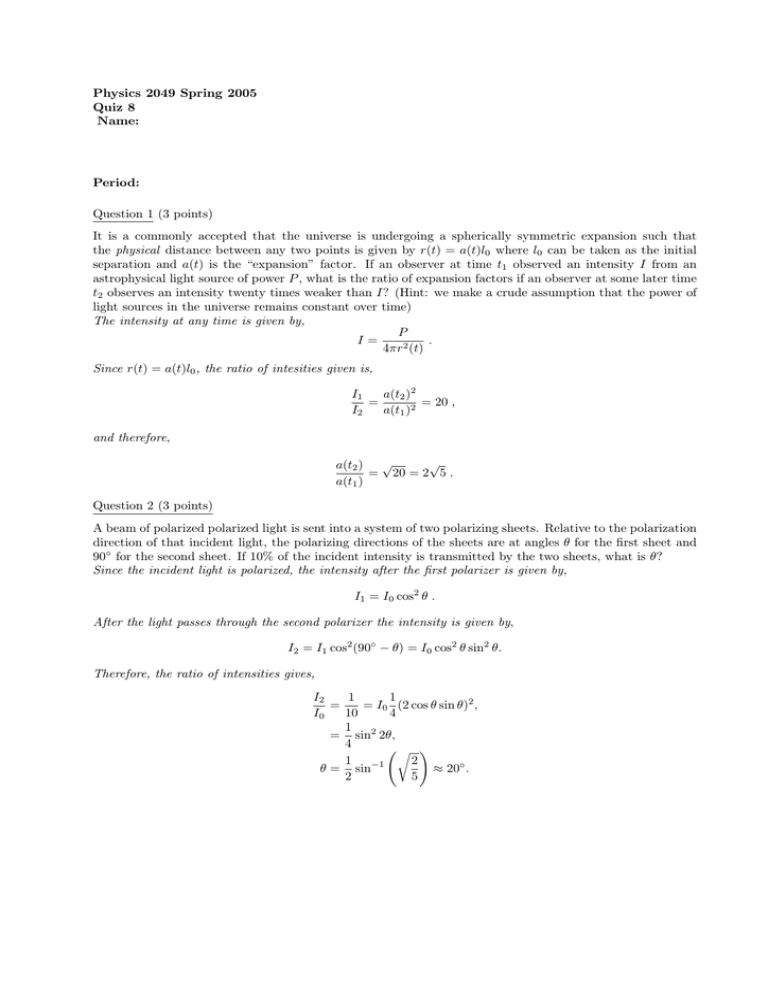
Physics 2049 Spring 2005 Quiz 8 Name: Period: Question 1 (3 points) It is a commonly accepted that the universe is undergoing a spherically symmetric expansion such that the physical distance between any two points is given by r(t) = a(t)l0 where l0 can be taken as the initial separation and a(t) is the “expansion” factor. If an observer at time t1 observed an intensity I from an astrophysical light source of power P , what is the ratio of expansion factors if an observer at some later time t2 observes an intensity twenty times weaker than I? (Hint: we make a crude assumption that the power of light sources in the universe remains constant over time) The intensity at any time is given by, P I= . 4πr2 (t) Since r(t) = a(t)l0 , the ratio of intesities given is, I1 a(t2 )2 = = 20 , I2 a(t1 )2 and therefore, √ a(t2 ) √ = 20 = 2 5 . a(t1 ) Question 2 (3 points) A beam of polarized polarized light is sent into a system of two polarizing sheets. Relative to the polarization direction of that incident light, the polarizing directions of the sheets are at angles θ for the first sheet and 90◦ for the second sheet. If 10% of the incident intensity is transmitted by the two sheets, what is θ? Since the incident light is polarized, the intensity after the first polarizer is given by, I1 = I0 cos2 θ . After the light passes through the second polarizer the intensity is given by, I2 = I1 cos2 (90◦ − θ) = I0 cos2 θ sin2 θ. Therefore, the ratio of intensities gives, 1 1 I2 = = I0 (2 cos θ sin θ)2 , I0 10 4 1 = sin2 2θ, 4 Ãr ! 1 2 −1 θ = sin ≈ 20◦ . 2 5


